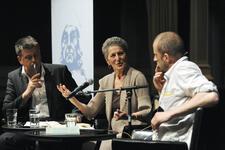Education: Libraries
Dina Abramowicz
After surviving the Holocaust, first in the Vilna Ghetto and then with the partisans, Dina Abramowicz became the formidable head librarian of the YIVO Institute for Jewish Research. During her tenure, she vastly expanded the library’s collections and was regularly sought out by scholars for her prodigious memory regarding Yiddish literature, children’s literature, the Holocaust, and modern Eastern European Jewish history and culture.
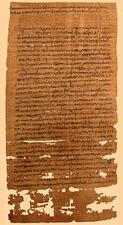
Babatha
Babatha, daughter of Shim’on, a Jewish landowner who lived in Roman Arabia, owned a document archive found in a cave in the Judaean desert. Babatha’s archive is an extremely important resource for many issues, especially on the question of Jewish women’s legal position in Greco-Roman Palestine during the second century CE.
Hannah Barnett-Trager
Hannah Barnett-Trager’s involvement in the literary world began when she helped found and then worked as a librarian at the Jewish Free Reading Room in London. She published her first article in 1919 and went on to write books for both children and adults. Trager’s writing discussed Jewish culture and politics, often drawing from her own experiences.
Beatrice Berler
Beatrice Berler was an award-winning translator of Spanish-language novels and history and a renowned community activist. She worked in women’s fashion for over twenty years before returning to school at the age of forty-five, eventually becoming nationally recognized as a literacy activist.

Clementine Bern-Zernik
A lawyer by training, Vienna-born Clementine Bern-Zernik produced broadcasts for the US Office of War Information in London during the war, served as the director of a Displaced Persons Camp in post-war Germany, and spent the last 50 years of her life as a UN liaison to the New York Public Library. Throughout her life she maintained a strong Austrian identity and was a founding member of the Austrian-American Federation.
Gertrud Bing
Art historian Gertrud Bing was a key figure at the Warburg Institute, a research library focused on the afterlife of antiquity in the art of the Renaissance. Beginning as personal assistant to the Institute’s founder, Aby Warburg, and ultimately becoming its director, Bing helped develop and disseminate iconology, a methodology that investigates the social, historical, and cultural meanings of themes and subjects in artworks and that transformed twentieth-century art history.

Dance in the Yishuv and Israel
Artists began to try to create a new Hebrew dance in the 1920s. Israeli Expressionist Dance flourished first, followed by American modern dance. Israeli dance became professionalized and centralized, and over the past few decades, efforts to promote local creativity accelerated, ethnic dance companies have flourished, and choreographers have taken increasingly political stances.
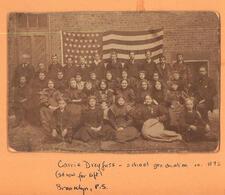
Carrie Dreyfuss Davidson
Carrie Dreyfuss Davidson became an important voice for women in the Conservative Movement as a founder of United Synagogue’s Women’s League and founding editor of its journal Outlook. Davidson exemplified the often-competing paradigms of Jewish homemaker and accomplished writer and community leader.
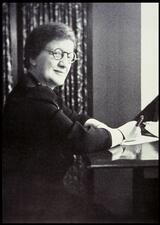
Jennie Maas Flexner
Ruth Gay
Through her writing, Ruth Glazer Gay captured an engaging view of the Jewish community, both past and present. As a writer, journalist, and archivist, she demonstrated throughout her life the possibility of having an intellectually vibrant career while still accommodating marriage and motherhood.
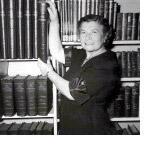
Fanny Goldstein
Librarian, social activist, and founder of National Jewish Book Week, Fanny Goldstein helped institutionalize national pride in ethnic and immigrant backgrounds through her work in libraries and settlement houses, and in her lectures and writing.
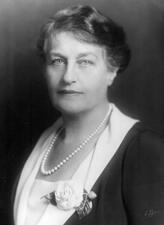
Hebrew Teachers Colleges in the United States
Jewish education in the United States was always the preserve of women on the “front lines” and in the classroom. In the early days of these programs, men “ran the show,” but beginning in the mid-twenteith century, women began to take on increasing roles as faculty members and administrators. In the early twenty-first century, women ascended to leadership positions in these institutions.
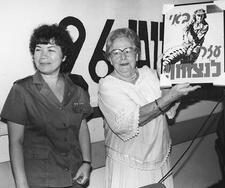
Esther Herlitz
Esther Herlitz was a feminist trailblazer in Israeli politics and diplomacy. She was the first official female Israeli ambassador, among six female Labor Party members who served in the eighth and ninth Knessets, and the first woman to serve on the Committee for Foreign Affairs and Defense. She also helped formulate and ensure the passage of a liberal abortion law in 1977.
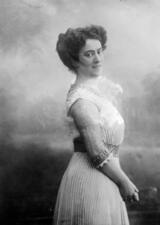
Rahel Hirsch
Physiologist, physician, and teacher Rahel Hirsch worked for nearly two decades at the Medical Clinic of the Berlin Charité, eventually as the head of a polyclinic and a professor. Yet Hirsch was never paid at the Charité; she left in 1919 and opened a private practice. Hirsch emigrated to England in 1938, working as a laboratory assistant and librarian, but she struggled with mental illness and died in a psychiatric hospital in 1953.
Dorothea Hirschfeld
Too old, not properly educated, a member of the Social-Democrat Party, and a Jewish woman, Dorothea Hirschfeld nevertheless succeeded in entering the civil service at the age of forty-three. She directed the Berlin Center for Social Work and Care of the Poor in Berlin from 1924 to 1929, and despite being pushed out of work by the Nazis, survived deportation and remained in Germany until her death in 1966.

Historians in the United States
American Jewish women have made important contributions to historical scholarship, especially in the arenas of social history of the United States and Europe, women’s history, and Jewish history. Jewish women, sensitive to the situations of minority groups, became pioneers in these fields as they developed from the 1970s on.

Jewish Museums in the United States
American Jewish women have played an outsized role in the foundation of Jewish museums all over the country. Barred from traditional spaces of power in the early twentieth century, many women—adjacent to power as Rebbetzins, philanthropists, and secretaries of libraries and other Jewish organizations—leveraged their connections to found new kinds of cultural institutions: museums.
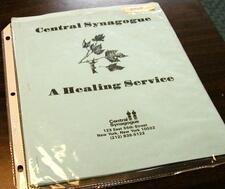
JWRC: Eleanor Leff Jewish Women's Resource Center
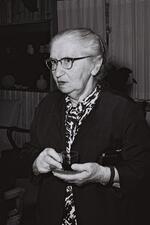
Rahel Katznelson
Lillian Ruth Kessler
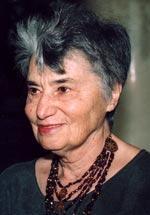
Ruth Klüger
A Holocaust survivor from Vienna (1931-2020), Ruth Klüger emigrated to the United States in 1947 and pursued a career in academia. Her German-language autobiography weiter leben: Eine Jugend (1992) revealed her personal experience of the Holocaust to the public, establishing her as one of the leading public intellectuals on the Holocaust in Austria and Germany.
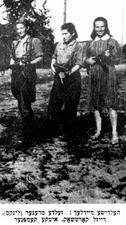
Rozka Korczak-Marla
Rozka Korczak-Marla was active in underground resistance during World War II, serving in the United Partisan Organization to smuggle weapons into the Vilna Ghetto and help Jews escape. After the war she immigrated to Palestine and settled into kibbutz life.
Librarians in the United States
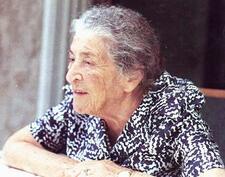
Bracha Peli
Bracha Peli was unique among the literary community of pre-state Palestine, creating what was probably the most successful and dynamic publishing house in the country at the time. Born Bronya Kutzenok in Tsarist Russia, Peli had an expansive and highly successful career.

